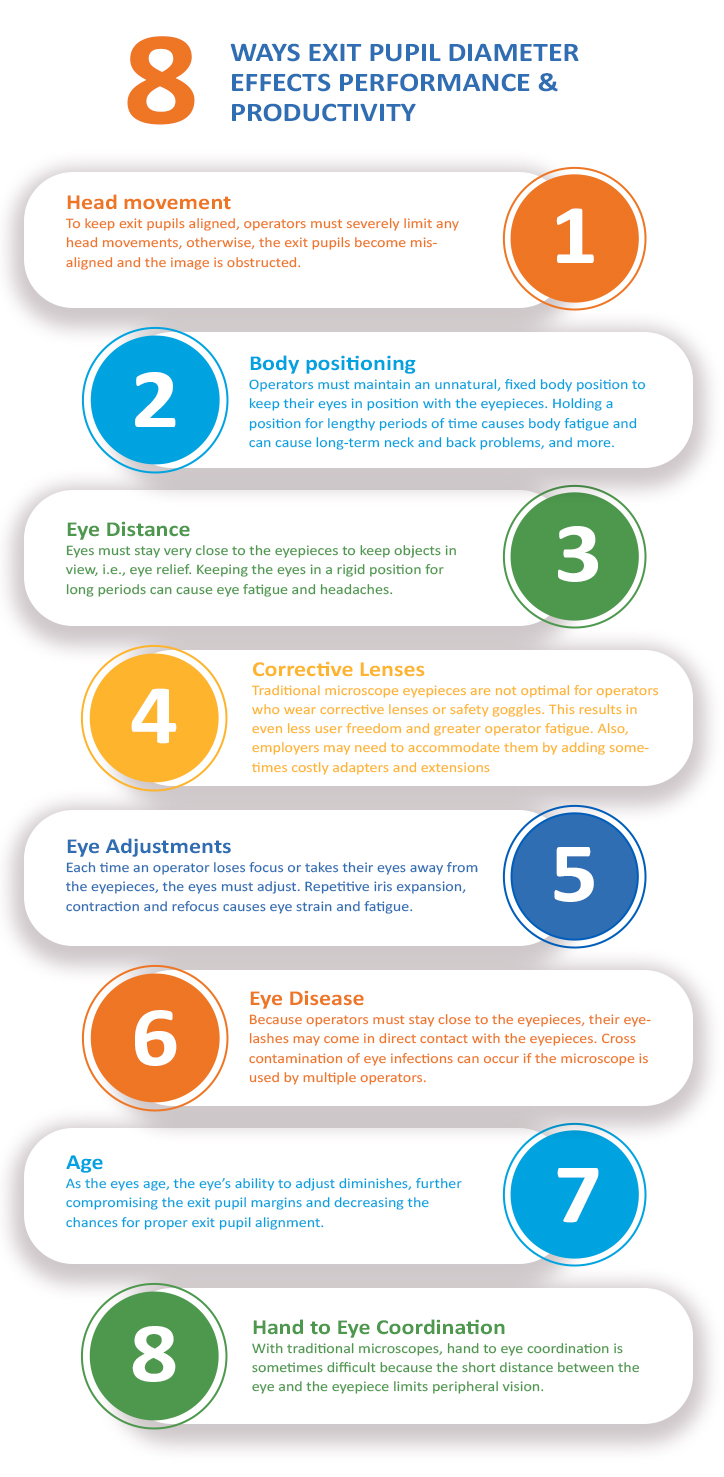When working with microscopes, everything that comes before and after the exit pupil can significantly affect quality and productivity. So, what is the exit pupil and how can it have so much control over production outcomes?
A person’s eyes and a stereo microscope both have pupils. For the eye it’s an entry pupil, for a microscope it’s the exit pupil. The eye’s entry pupil is in the center of the iris and measures from 3mm to 7mm in diameter. A microscope’s exit pupil measures from 1.5mm to 3mm and can be easily seen by placing a piece of white paper in the place where a user would normally position their eyes. With the microscope focused on a bright object, you will then see two distinct circles of light above each lens on the white paper.
When using a microscope, the eye’s entry pupil and the microscope’s exit pupils need to match up almost exactly or at least be close, to produce the cleanest and clearest image of the object.

Left eye: 3mm light diameter from a conventional microscope.
Right eye: 35mm light diameter from an eyepiece-less microscope.














